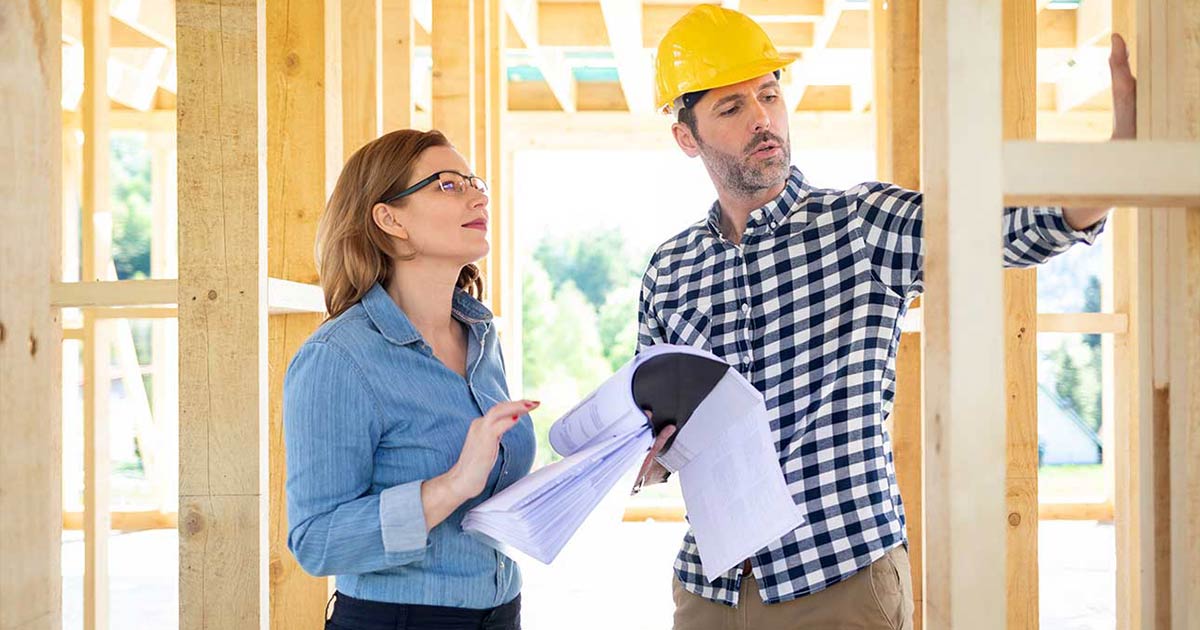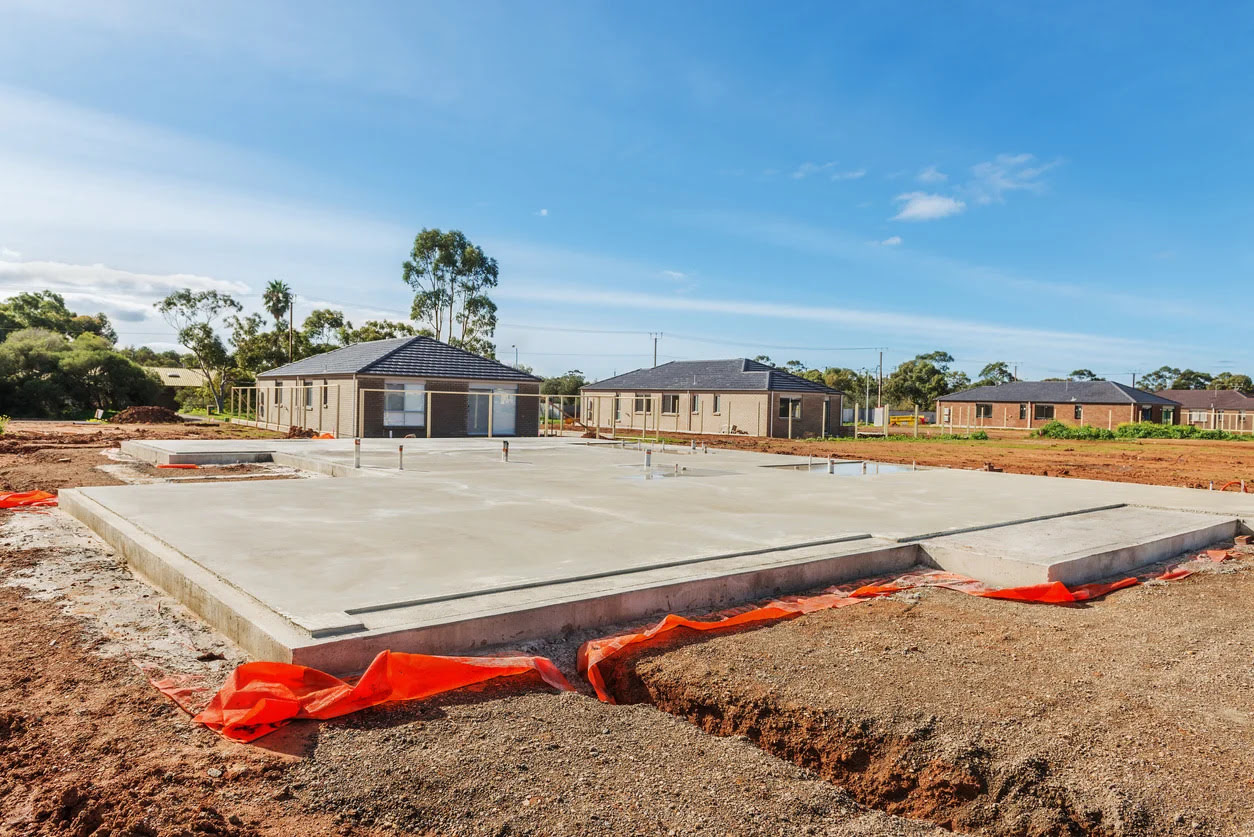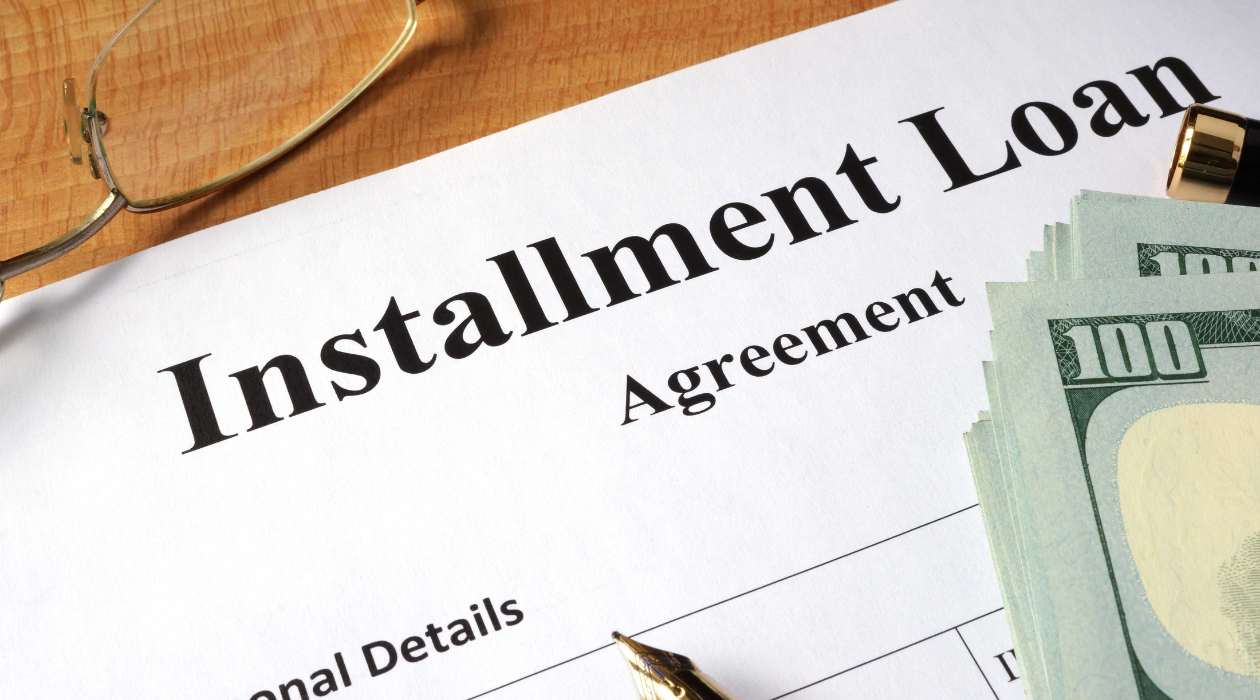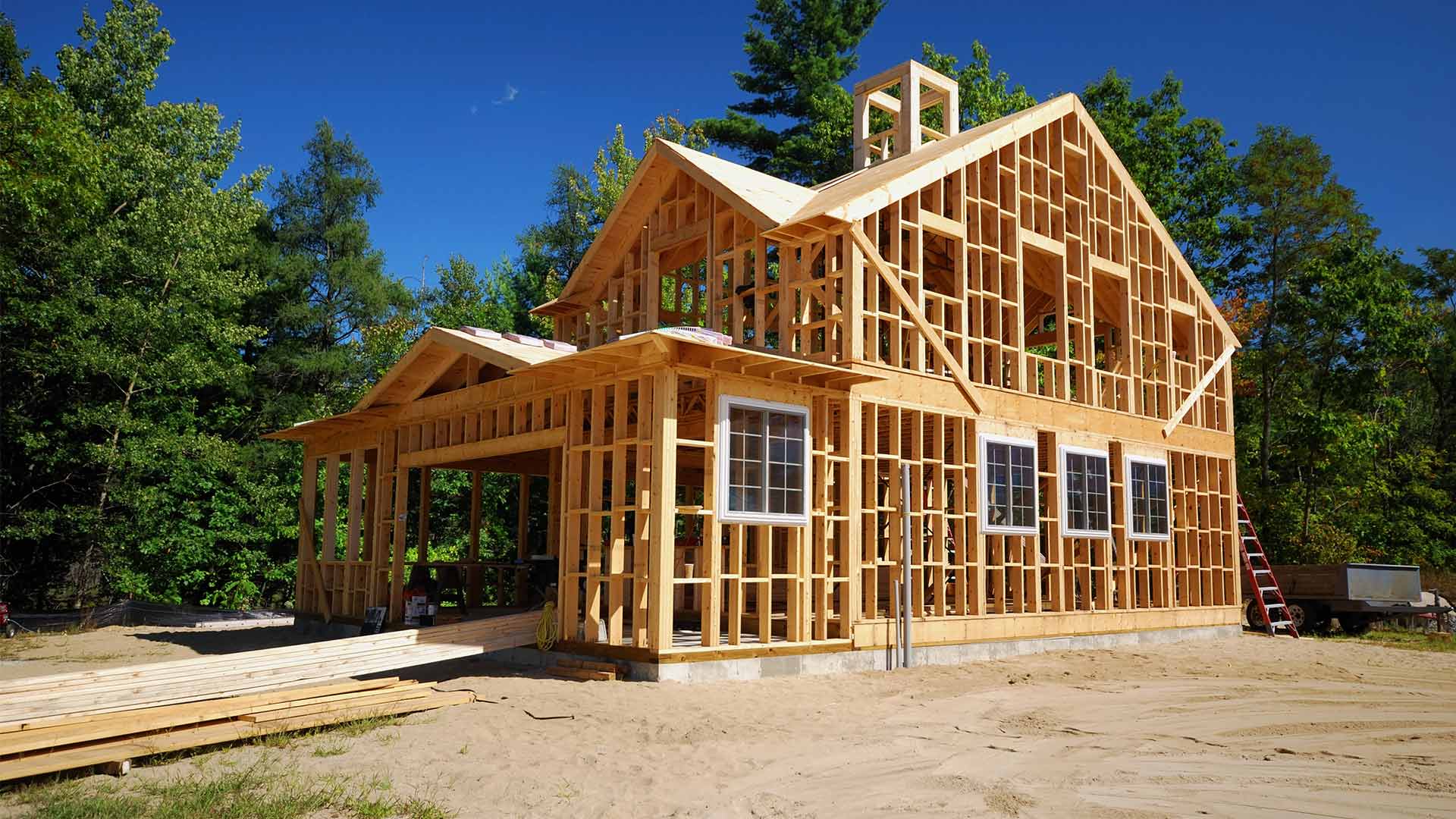Home>diy>Building & Construction>How Do Construction Loans Work


Building & Construction
How Do Construction Loans Work
Modified: February 25, 2024
Learn how building construction loans work and get the funding you need to complete your dream project. Find out the process, requirements, and benefits.
(Many of the links in this article redirect to a specific reviewed product. Your purchase of these products through affiliate links helps to generate commission for Storables.com, at no extra cost. Learn more)
Introduction
Welcome to the world of construction loans, where dreams are turned into reality. Building your own home or undertaking a major renovation project can be an exciting and fulfilling endeavor. However, financing such projects can present unique challenges.
Construction loans are specialized loans designed to provide funding for the construction or renovation of residential or commercial properties. Unlike traditional mortgages or personal loans, construction loans are specifically tailored to meet the needs of developers, builders, and individual homeowners looking to embark on construction projects.
In this comprehensive guide, we will delve into the intricacies of how construction loans work, the types of construction loans available, the qualification process, the application process, the terms and conditions, the disbursement of funds, managing construction costs, the timeframe for repayment, and the associated risks and considerations.
Whether you are a seasoned contractor or a first-time homeowner, understanding how construction loans function is crucial for a successful project completion. So, let’s dive in and explore the fascinating world of construction loans.
Key Takeaways:
- Construction loans are specialized short-term financing options that disburse funds in stages based on construction progress. Understanding the types, qualification criteria, and risks is crucial for successful project completion.
- Effective cost management, clear communication, and thorough planning are essential for navigating the complexities of construction loans. Being proactive and prepared for potential challenges can lead to a successful construction endeavor.
Read more: How Do Construction Loans Work?
Understanding Construction Loans
Construction loans are a specialized form of financing that provide funds for the construction, renovation, or expansion of a property. Unlike traditional mortgages, which are based on the appraised value of a completed home, construction loans are disbursed in stages based on the progress of the construction project.
One of the key differences between a construction loan and a traditional mortgage is the way the funds are released. In a construction loan, funds are typically distributed in installments, known as “draws,” as different stages of the construction project are completed. These draws are usually made on a specific schedule, with the lender inspecting the progress before releasing the funds.
Another important aspect of construction loans is that they are typically short-term loans. They are designed to be repaid once the construction is completed and the property is ready to be occupied or sold. At that point, the borrower can either pay off the construction loan with a traditional mortgage, or choose to sell the property and repay the loan using the proceeds.
Construction loans also differ from traditional mortgages in terms of interest rates. While traditional mortgages usually have fixed interest rates, construction loans often have variable interest rates that are tied to a specific benchmark, such as the prime rate. This means that the interest rate can fluctuate during the construction period, potentially impacting the borrower’s monthly payments.
It’s important to note that construction loans are generally considered riskier for lenders compared to traditional mortgages. This is due to the nature of construction projects, which involve various uncertainties such as cost overruns, delays, and potential construction defects. To mitigate these risks, lenders typically require a higher down payment and impose stricter qualification criteria for construction loans.
Now that we have a basic understanding of construction loans, let’s explore the different types of construction loans available and how to qualify for them.
Types of Construction Loans
When it comes to construction loans, there are several types available to suit different needs and circumstances. Let’s take a closer look at the most common types of construction loans:
- Construction-to-Permanent Loans: Also known as “single-close” loans, this type of construction loan combines both the construction financing and the permanent mortgage into one loan. With this type of loan, borrowers only have to go through the application and approval process once, saving time and potential fees. Once the construction is complete, the loan automatically converts to a permanent mortgage with regular monthly payments.
- Stand-Alone Construction Loans: As the name suggests, stand-alone construction loans are separate from the permanent mortgage. Borrowers will need to secure two loans – one for the construction phase and another for the mortgage. Once the construction is finished, the borrower will need to refinance the construction loan into a permanent mortgage, which may involve additional fees and paperwork.
- Renovation Construction Loans: These loans are specifically designed for major renovations or remodeling projects. Whether you’re looking to add an addition to your home or completely renovate an existing property, renovation construction loans provide the necessary funding to cover the construction costs.
- Owner-Builder Construction Loans: This type of construction loan is designed for homeowners who wish to act as their own general contractor or builder. Owner-builder construction loans provide financing for self-built projects, allowing homeowners to have full control over the construction process. However, these loans typically have stricter qualification criteria and require a higher level of construction expertise.
- Spec Home Construction Loans: Spec home construction loans are used to finance the construction of homes that are built without a buyer in place. Builders or developers who build spec homes rely on the loan to cover the construction costs until the property is sold. Once the spec home is sold, the loan is typically paid off with the proceeds from the sale.
Each type of construction loan has its own advantages and considerations. It’s important to carefully evaluate your needs and preferences before choosing the right type of loan for your construction project.
Now that we have explored the different types of construction loans, let’s move on to the next step – qualifying for a construction loan.
Qualifying for a Construction Loan
Qualifying for a construction loan requires careful consideration and meeting certain criteria set by lenders. While the specific requirements may vary from lender to lender, here are some key factors that lenders typically consider when evaluating a borrower’s eligibility for a construction loan:
- Creditworthiness: Lenders will review your credit history, including your credit score, to assess your ability to repay the loan. A higher credit score generally indicates lower credit risk and may improve your chances of securing a construction loan. It’s important to maintain a good credit standing and address any issues or discrepancies on your credit report.
- Down Payment: Construction loans often require a higher down payment compared to traditional mortgages. Lenders typically require a down payment of 20% to 25% of the total project cost. This demonstrates your commitment to the project and reduces the lender’s risk. It’s important to have sufficient funds available for the down payment.
- Income and Debt-to-Income Ratio: Lenders will evaluate your income and debt obligations to determine your ability to repay the loan. They will look at your debt-to-income ratio, which compares your monthly debt payments to your gross monthly income. Most lenders prefer a debt-to-income ratio of 43% or lower to qualify for a construction loan.
- Documentation: Lenders will request various documents to verify your financial situation and credibility. This may include tax returns, bank statements, pay stubs, and project plans. It’s important to have these documents prepared and organized to expedite the application process.
- Construction Experience: If you’re acting as your own general contractor or builder for an owner-builder construction loan, lenders may require evidence of your construction experience and expertise. This can include references, certifications, and past projects to demonstrate your ability to successfully manage the construction process.
It’s worth noting that construction loans can be more challenging to qualify for compared to traditional mortgages due to their higher risk nature. It’s essential to have a clear understanding of the lender’s eligibility requirements and be prepared to provide the necessary documentation to support your loan application.
Once you meet the qualification criteria, you can proceed to the next step – the application process for a construction loan.
The Application Process
The application process for a construction loan involves several steps, and it’s important to be prepared and organized to streamline the process. Here is an overview of the typical application process:
- Gather Information: Start by gathering all the necessary information and documentation required by the lender. This may include personal identification documents, financial statements, tax returns, bank statements, and project plans.
- Choose a Lender: Research and choose a reputable lender that offers construction loans. Compare their interest rates, terms, fees, and reputation. It’s important to find a lender that understands your specific project and has experience working with construction loans.
- Pre-Approval: Before submitting a formal loan application, it’s beneficial to get pre-approved for a construction loan. This step involves providing the lender with your financial information and allowing them to perform a preliminary assessment of your creditworthiness and project feasibility.
- Submit the Application: Once you’ve chosen a lender and gathered all the necessary documents, submit the formal loan application. The application will require detailed information about your project, including the estimated construction costs, timeline, and any applicable permits or approvals.
- Review and Underwriting: The lender will review your application, documents, and project details. They will evaluate your creditworthiness, income, down payment, and project feasibility. This process may involve a thorough underwriting process, including an appraisal of the property and a review of the project plans and budget.
- Loan Approval and Closing: If your application is approved, the lender will issue a loan commitment letter detailing the terms and conditions of the loan. Review the commitment letter carefully to ensure you understand and agree with the terms. Once you accept the offer, you will proceed to the closing, where the loan documents are signed, and the loan funds are disbursed.
It’s important to note that the application process may vary slightly depending on the lender and the complexity of your project. It’s crucial to maintain open communication with your lender throughout the process and provide any additional information or documentation they may request.
Now that you have a better understanding of the application process, let’s explore the terms and conditions typically associated with construction loans.
Read more: How Does A Construction Loan Work
Construction Loan Terms and Conditions
When obtaining a construction loan, it’s important to be familiar with the terms and conditions associated with the loan. Here are some common terms and conditions that you may encounter:
- Loan Amount: The loan amount is the total sum that the lender is willing to provide for your construction project. This amount will be based on factors such as the appraised value of the property, construction costs, and your ability to repay the loan.
- Interest Rate: The interest rate is the percentage charged by the lender for borrowing the funds. Construction loans often have variable interest rates, which are tied to a specific benchmark such as the prime rate. It’s important to understand how the interest rate is determined and how it may change over time.
- Loan Term: The loan term refers to the duration of the loan, typically measured in months or years. Construction loans are usually short-term loans, as they are intended to be repaid once the construction is completed. The loan term can vary based on the size and complexity of the project, but it’s typically around 6 to 24 months.
- Draw Schedule: The draw schedule outlines the timing and amount of each disbursement of funds throughout the construction process. It is typically structured in a way that aligns with specific construction milestones. The lender will conduct inspections to ensure that the construction is progressing as planned before releasing the funds for each draw.
- Construction Contingency: A construction contingency is an additional amount of money set aside to cover unexpected costs that may arise during the construction process. It acts as a buffer to provide flexibility in case of change orders, unforeseen issues, or cost overruns. The contingency is usually a percentage of the total construction cost.
- Loan-to-Value (LTV) Ratio: The loan-to-value ratio compares the loan amount to the appraised value of the property. It is used by lenders to assess the risk associated with the loan. A lower LTV ratio indicates a lower level of risk for the lender. For construction loans, the LTV ratio is typically lower than for traditional mortgages, often around 80% or less.
It’s crucial to carefully review and fully understand the terms and conditions of your construction loan before signing any documents. If there are any unclear terms or conditions, don’t hesitate to seek clarification from your lender or consult with a legal professional.
Now that we have covered the terms and conditions, let’s move on to understanding how the funds are disbursed during the construction process.
When applying for a construction loan, be prepared to provide detailed plans, a realistic budget, and a timeline for the project. Lenders will want to see that you have a solid plan in place before approving the loan.
Disbursement of Funds
During the construction phase, the funds from a construction loan are typically disbursed in a series of “draws” based on predetermined milestones. The disbursement process ensures that the funds are released at specific stages of the construction project, helping to cover incurred expenses and maintain cash flow. Here’s how the disbursement of funds usually works:
- Draw Schedule: The draw schedule is created by the lender and outlines the specific milestones or phases of construction for which funds will be disbursed. It is typically based on the construction plans and may vary depending on the lender’s policies and the complexity of the project.
- Inspection and Approval: Before each draw, the lender will send a qualified inspector to the construction site. The purpose of the inspection is to verify that the work completed aligns with the draw request and that it meets the lender’s standards and requirements. The inspector will assess the progress of the construction and determine if it merits the release of funds.
- Draw Request: Once a specific milestone or phase is completed and approved by the inspector, the borrower or the contractor submits a draw request to the lender. The draw request includes documentation such as invoices, receipts, and lien waivers from subcontractors and suppliers. This documentation serves as evidence of the work completed and the associated costs.
- Review and Disbursement: Upon receiving the draw request, the lender’s team will review the documentation and verify its accuracy. They may also conduct an additional inspection if deemed necessary. Once satisfied, the lender will disburse the approved funds directly to the borrower or via the contractor. The funds are generally deposited into an escrow account or a designated construction account.
- Repeat the Process: The process of submitting draw requests and receiving disbursements continues throughout the construction phase until the project is completed. The frequency of the draws and the amount disbursed may vary depending on the progress and complexity of the construction project.
It’s important to adhere to the agreed-upon draw schedule and follow the lender’s instructions and requirements for submitting draw requests. Proper documentation, including invoices and lien waivers, is crucial to ensure smooth and timely disbursement of funds.
Now that we understand how the funds are disbursed, let’s discuss an important aspect – managing construction costs.
Managing Construction Costs
Managing construction costs is a critical aspect of any construction project. Staying within budget and effectively managing expenses can help ensure the successful completion of the project. Here are some tips for managing construction costs:
- Create a Detailed Budget: Before starting the construction, create a detailed budget that includes all the anticipated costs, such as materials, labor, permits, and professional fees. It’s crucial to be realistic and include contingencies for unexpected expenses.
- Obtain Multiple Bids: Seek bids from multiple contractors, suppliers, and subcontractors. This allows you to compare prices and choose the most cost-effective options without compromising on quality. Take the time to evaluate the experience and reputation of each potential vendor.
- Regular Cost Tracking: Maintain a system to track all expenses related to the project. Keep a detailed record of every payment, invoice, receipt, and change order. Regularly review and analyze these records to stay informed about the project’s financial status and identify any potential cost overruns.
- Communicate Clearly: Effective communication with contractors, architects, and other parties involved in the project is crucial. Clearly communicate your budget constraints and regularly check in with them to ensure everyone is aligned regarding costs and expectations.
- Value Engineering: Explore value engineering opportunities to optimize costs without sacrificing quality. This involves finding alternative materials or construction methods that offer comparable functionality at a lower cost. Consult with professionals to identify areas where cost savings can be achieved.
- Manage Change Orders: Change orders can significantly impact the budget. Take the time to carefully assess any proposed changes and their potential cost implications. Ensure that all change orders are documented, reviewed, and approved in writing before proceeding to avoid costly surprises.
- Regular Project Monitoring: Regularly visit the construction site and closely monitor the progress and quality of work. Identify any potential issues or deviations from the plan that could impact costs. Address these issues promptly to prevent them from escalating into major cost overruns.
- Negotiate Supplier Discounts: Take advantage of your relationships with suppliers and negotiate discounts or bulk purchase rates for materials. Seek out opportunities for cost savings without compromising on quality.
- Be Proactive: Proactively address any potential delays, complications, or issues that could impact the project timeline and costs. Timely intervention and problem-solving can help minimize unexpected expenses and keep the project on track.
By implementing these strategies, you can effectively manage construction costs and keep your project within budget. Regular monitoring, clear communication, and careful financial planning are key to successful cost management.
Next, let’s discuss the timeframe for repaying a construction loan.
Timeframe for Repayment
The timeframe for repaying a construction loan varies depending on the specific terms and conditions set by the lender. It’s important to understand the repayment timeline to effectively plan your finances and ensure timely payment of the loan. Here’s what you need to know about the repayment schedule:
Interest-only Period: During the construction phase, most construction loans have an interest-only payment period. This means that you’ll only be required to make monthly interest payments on the funds disbursed, rather than paying both principal and interest. The interest-only period typically lasts until the construction is completed and the property is ready for occupancy.
Conversion to Permanent Mortgage: Once the construction is complete, the construction loan will need to be converted into a permanent mortgage. At this point, the borrower can choose to either sell the property and use the proceeds to repay the loan, or secure a long-term mortgage to refinance the outstanding construction loan balance. The timeframe for conversion to a permanent mortgage can vary, but it is typically within a few months of project completion.
Repayment Terms: The repayment terms for the permanent mortgage will depend on the mortgage program and terms chosen by the borrower. This can include the loan term, interest rate, and monthly payment amount. Common loan terms for permanent mortgages are 15 years, 30 years, or even longer.
Amortization: Once the construction loan is converted to a permanent mortgage, the repayment typically transitions from interest-only payments to amortized payments. Amortization involves making regular monthly payments that include both principal and interest, over the course of the loan term until the mortgage is fully paid off.
Early Repayment: Some construction loans may have a prepayment penalty if the borrower chooses to pay off the loan early. It’s important to review the terms of the loan agreement and understand any potential penalties or fees associated with early repayment. Paying off the loan early can save money on interest but may come with certain restrictions or costs.
The timeframe for repayment of a construction loan can vary depending on the duration of the construction phase and the chosen loan program. It’s essential to discuss and clarify the repayment terms with your lender to understand your obligations and plan accordingly.
As we near the end of our discussion, let’s consider some of the risks and important considerations associated with construction loans.
Read more: How Does A New Home Construction Loan Work
Risks and Considerations
While construction loans can be a valuable financing tool for building or renovating properties, they also come with certain risks and considerations. It’s important to be aware of these factors before embarking on a construction loan. Here are some key risks and considerations to keep in mind:
- Construction Risk: Construction projects can be complex and involve unforeseen challenges, such as delays, cost overruns, and construction defects. These risks can result in additional expenses or time delays, impacting the overall success of the project.
- Budgeting and Cost Management: Proper budgeting and cost management are crucial for the successful completion of a construction project. Unexpected costs or inaccurate budgeting can strain finances and lead to financial difficulties.
- Market Volatility: The real estate market can be volatile, and economic conditions can impact the value of properties. It’s important to consider the potential impact of fluctuations in property values on your project’s feasibility and the ability to repay the loan.
- Interest Rate Fluctuations: Construction loans often have variable interest rates, which means that the interest rate can change over the course of the loan. Fluctuations in interest rates can impact monthly payments and the overall cost of the loan.
- Qualification and Financial Risk: Construction loans typically have stricter qualification criteria compared to traditional mortgages. It’s important to assess your financial capability and ensure that you can meet the lender’s requirements for down payment, income, and creditworthiness.
- Contractor Reliability: The success of a construction project relies heavily on the expertise and reliability of the contractors and builders involved. It’s crucial to carefully select experienced and reputable professionals to minimize the risk of subpar workmanship or project delays.
- Legal and Regulatory Considerations: Construction projects are subject to various legal and regulatory requirements, such as building codes, permits, and zoning restrictions. It’s essential to adhere to these regulations to avoid potential penalties or delays.
- Insurance Coverage: Adequate insurance coverage is essential to protect against risks such as property damage, liability claims, and construction accidents. It’s important to obtain appropriate insurance coverage for the duration of the construction project.
- Contingency Planning: Developing a contingency plan is crucial to mitigate potential risks and unexpected events that can impact the project. Having a contingency fund and a backup plan can help address unforeseen circumstances and ensure the project’s progress.
Understanding and addressing these risks and considerations is key to minimizing potential challenges and maximizing the success of your construction project. It’s important to consult with professionals, including lenders, contractors, and legal advisors, to make informed decisions and navigate the complexities associated with construction loans.
As we conclude our guide to construction loans, it’s clear that thorough preparation, careful financial planning, and diligent project management are vital for a successful construction endeavor.
Best of luck with your construction project!
Conclusion
Embarking on a construction project is an exciting endeavor, and securing the right financing is essential to turn your vision into reality. Construction loans provide a specialized form of funding specifically designed for building or renovating properties. Understanding how construction loans work and the associated risks and considerations is crucial to ensure a smooth and successful process.
In this comprehensive guide, we’ve explored the intricacies of construction loans, including the different types available, the qualification process, the application process, the terms and conditions, the disbursement of funds, managing construction costs, the timeframe for repayment, and the associated risks and considerations. Armed with this knowledge, you’re better equipped to navigate the complexities of securing and managing a construction loan.
Throughout the construction process, it’s important to maintain open communication with your lender, contractors, and other professionals involved. Regularly monitor the progress of the project, adhere to the budget, and address any issues promptly to minimize risks and ensure a successful outcome.
Remember, careful planning, budgeting, and cost management are crucial for the success of your construction project. Be prepared for unexpected challenges and have contingency plans in place to mitigate risks. Working with experienced professionals and seeking professional advice when needed can also contribute to a smoother construction process.
Now that you’re armed with the knowledge and insights into construction loans, it’s time to turn your dreams into reality. Whether you’re building your dream home, expanding your business premises, or undertaking a major renovation project, a construction loan can provide the necessary financing to bring your vision to life.
Best of luck with your construction project and may it be a testament to your vision and hard work!
Frequently Asked Questions about How Do Construction Loans Work
Was this page helpful?
At Storables.com, we guarantee accurate and reliable information. Our content, validated by Expert Board Contributors, is crafted following stringent Editorial Policies. We're committed to providing you with well-researched, expert-backed insights for all your informational needs.














0 thoughts on “How Do Construction Loans Work”